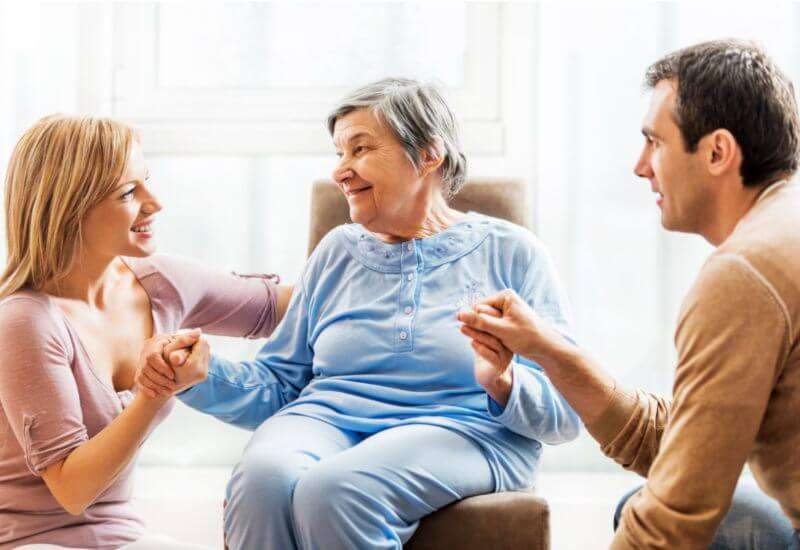It’s common for seniors in their sixties to consider downsizing to a smaller home or moving to a senior living community. In fact, 51% of retirees over the age of 50 move into smaller homes. However, this decision can be a difficult one. Many older adults are faced with leaving their family home and the memories that come with it. While this can be challenging, choosing to downsize can make life easier and safer for many aging adults and their families. There is no one-size-fits-all approach to successful downsizing. While some adults may choose to live on their own, others may find comfort in residing in a Continuing Care Retirement Community that offers all levels of care such as independent living, assisted living, and skilled nursing. In addition to deciding where to move, older adults must also decide if the timing is right.
Is it Time to Downsize?
Older adults choose to downsize for a number of different reasons. For some, aging is expensive, and downsizing provides a viable option to cut costs and reduce monthly expenses by lowering or eliminating mortgage payments, home insurance and property taxes. For others, things like stairs, multiple levels, a large yard and long walkways can become dangerous and limit one’s ability to age in place. No matter the reason for downsizing, choosing where and when to move are complicated decisions. If you or your loved ones are contemplating downsizing, there are some basic questions that can help you decide if it’s the right time to downsize:
- Do you have unused rooms in your home?
- Can you afford to stay in your current home for 10 or 20 years down the road?
- Is your yard easy to maintain? Can you safely complete household tasks?
- Do you feel isolated?
- Do you have too much stuff to manage?
At some point, you may realize that your home isn’t the safest or most economical place to age. If you have a lot of wasted space or have difficulty maintaining your family home, it could be the right time to downsize.
Where to Downsize?
There are two very common options when it comes to choosing where to downsize. Many older adults are faced with deciding between moving to a residential community or aging in place. Generally speaking, residential communities include independent living, assisted living, or nursing homes. In addition, Continuing Care Retirement Communities, such as Maple Knoll Village, offer all three types of care. In a residential community, residents are not responsible for yard work, maintenance, and do not have to make mortgage payments. Traditionally, those living in a residential community pay a monthly fee that includes utilities, housekeeping and even some meals. Most communities offer onsite medical care, memory care, and offer social activities on and off-campus.
The second option, aging in place, can be an attractive option for those wanting to live independently for as long as possible. In addition, older adults often choose to age in place when they are in excellent health or if the facilities in their area have poor reputations or are too expensive. For those aging in place with minimal needs, a smaller home with less chores may be an attractive option. However, it’s important to consider how many years they are likely to still be independent. For those with complex medical needs, aging in place can be more difficult and require hiring outside help to provide care or relying on the support of friends and family members.
Tips for Stress-Free Downsizing
Once you decide where to go, you’ll have to start the physical act of downsizing your belongings. While it may feel overwhelming, there are many ways to make downsizing feel like a manageable task. If you or a loved one has a potential downsize in the future, here are some tips to keep in mind:
- Start preparing early. Downsizing always takes longer than you might think. Giving yourself plenty of time to sort and pack your items will make transitioning into a new space much easier. In addition, moving companies often need advanced notice, especially if you are moving out of state.
- Prioritize communication. It’s not uncommon for adult children to notice their parents having difficulty maintaining their home. If this happens, adult children may need to approach the topic of downsizing with their parents. Adult children may consider offering to help clean out the garage or sort through items in storage. As the topic continues, it’s important for children to reassure their parents that they have a say in the matter.
- Set realistic goals. Downsizing can feel like an enormous task. The key to successful downsizing is to set small and attainable goals. You may consider starting with one room or one closet at a time. Before you begin, make sure you have all the necessary items like boxes, tape and markers.
- Sort your items. Experts agree that sorting your items into separate categories for taking with you, gifting, selling, donating and throwing away can help you stay organized and efficient.
- Keep the memories! One of the hardest parts of downsizing is having to part with precious memories and keepsakes. However, it’s possible for many items to be compressed. For example, photo albums and home movies can be stored onto DVDs or hard drives for easy storage. If you have a collection of items, consider keeping your favorites and donating the rest.
Making the Move to Maple Knoll Village
Our residents agree that one of the most difficult parts of transition into a retirement community is choosing how to downsize. However, the amenities, peace of mind, and sense of safety that comes with living at Maple Knoll Village is well worth the move. To speak learn more about life at Maple Knoll Village or to schedule a tour, please contact us at 513-782-2717.










